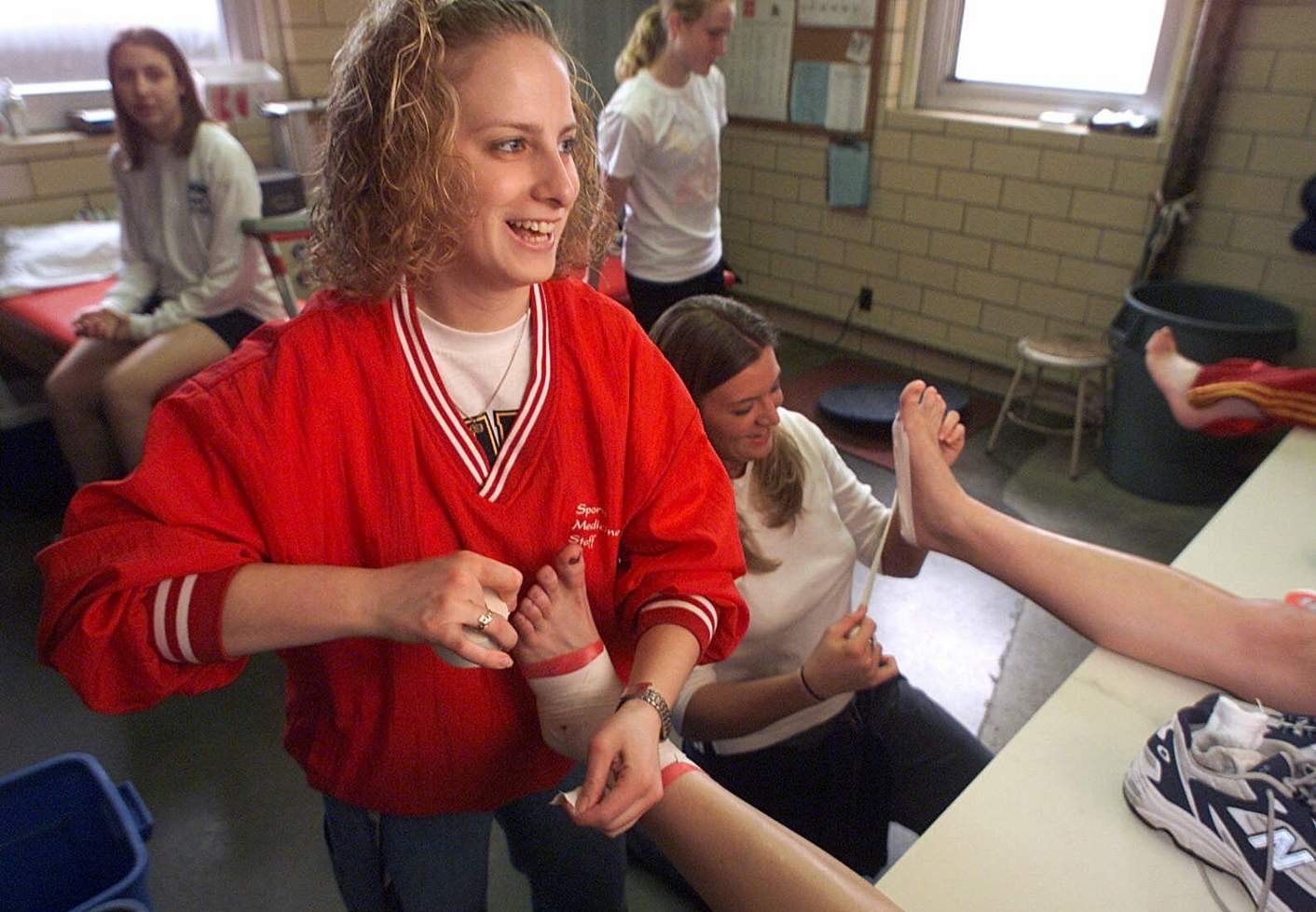
Editor’s note: Nancy Justis is a former competitive swimmer and collegiate sports information director. She is a partner with Justis Creative Communications.
My last column discussed the bill currently being considered in the Iowa House requiring high schools to have a certified medical staff person present at all “contact” sport events.
The law’s implementation will not be a huge stress on larger school districts, though all districts feel the budget crunch. It will be particularly difficult, however, for smaller districts to pay for such a program despite the need to keep our students safe and healthy.
The Waterloo School District, for example, has an agreement with Cedar Valley Medical Specialists to provide athletic trainers to West and East high schools with additional support to the four middle schools.
The district funding for this program is through the general operating budget. For the 2016-17 school year, payment is $47,400. That’s not an insignificant amount.
The National Athletic Trainers’ Association has reported schools employing athletic trainers have been able to show cost savings of as much as $80,000 a year to students and their families.
“Administrators can use this information to explain why employing an athletic trainer has value to the athlete, school and community, including decreased absenteeism, decreased lost game days, decreased parental concern and increased participation in school …,” the NATA reports.
NATA goes on to say possible ways of employing a trainer include a full-time person, a teacher who also is a trainer, a district trainer or a contracted trainer from a local sports medicine clinic.
“In situations where a full-time AT is not initially financially possible, a split position, combining AT duties with teaching, has traditionally been the most common approach,” NATA reports.
NATA notes finding “like-minded individuals who will help advocate for sports safety and assist in raising awareness and fundraising” is important. Suggestions for those advocates include parents, booster clubs and other parent groups; school board members; superintendents and principals; service organizations; local hospitals and physician groups; EMTs and ambulance companies; local professional teams; and national and local retailers and business owners.
In order to raise awareness of the need, NATA suggests asking a reporter to write an article about the issue, host a letter-writing campaign to advocate for the initiative, host a safety awareness night, create a petition and ask the school to apply for Safe Sports School Award (www.nata.org/safe-sports-school-award).
Fundraising ideas include increasing athletic fees with a portion dedicated to supporting sports medicine programs, asking for a percentage of gate and concession revenues, soliciting business donations, asking for equipment and supplies donations and asking for service donations, such as EMS coverage.
Don’t overlook local, state or federal grant moneys. For example, the NFL Foundation, NATA and Gatorade provided a funding opportunity in 2015 — the Athletic Trainer Initiative — that helped schools fund $50,000 for an athletic trainer.
I am hoping the Iowa law passes. There’s little else more important than our children’s safety.
l Let us know what you think by contacting Justis at njustis@cfu.net